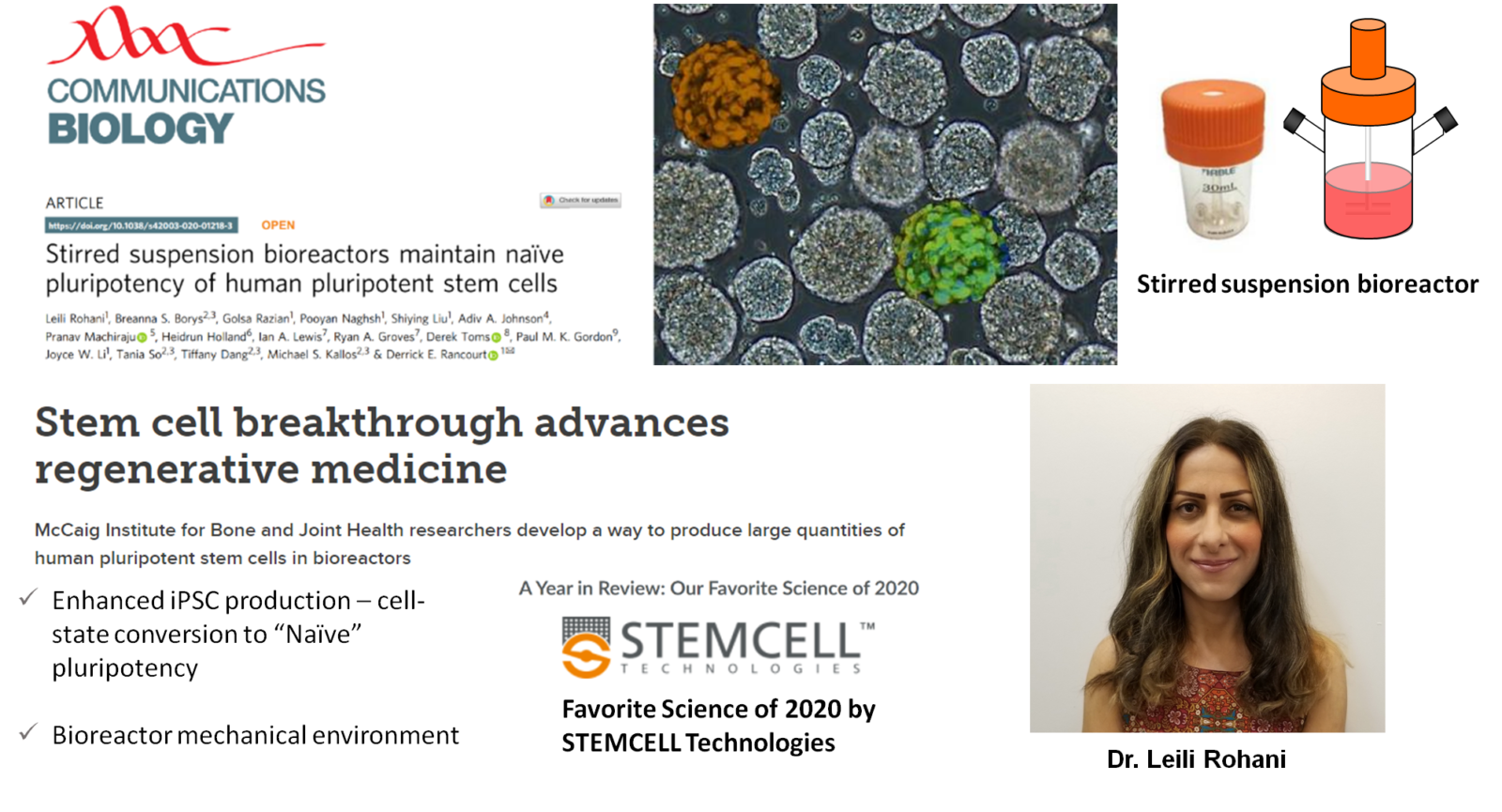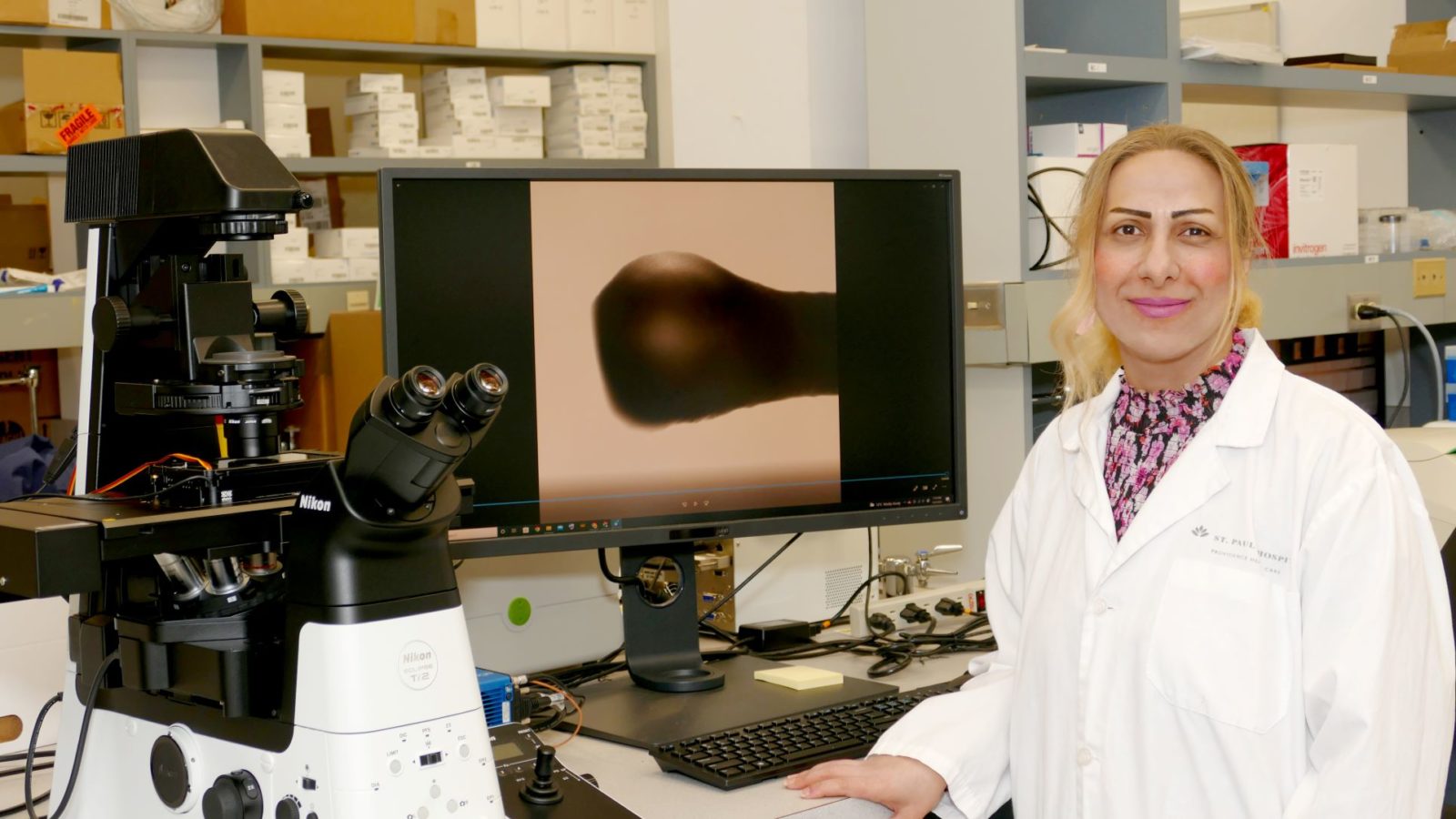Human pluripotent stem cells (hPSCs) harbour enormous potential for regenerative medicine and offer a unique opportunity to advance the development of cell-based therapies. The development of hPSC biobanks, and use of hPSCs in clinical trials, drug screening, and disease modeling, all demand robust stem cell manufacturing and expansion. Although the hPSC manufacturing field is evolving rapidly, a bottleneck is throttling clinical application: existing technologies cannot efficiently scale up production of clinically viable stem cells.
In collaboration with bioengineers at the University of Calgary and with the support from Stem Cell Network of Canada (SCN), Drs. Michael Kallos, Derrick Rancourt, Breanna Borys, and Leili Rohani (a postdoctoral research scientist in Dr. Zachary Laksman’s lab at the HLI) developed a system for bioprocess bioengineering and cell manufacturing of human pluripotent stem cells in a bioreactor to produce clinically viable hPSCs.

Dr. Rohani and her colleagues enhanced stem cell manufacturing by converting hPSCs towards a naïve state (earlier state of pluripotency). This method enabled scalable production of hPSCs and reduced initial culture heterogeneities. Given that the same starting “material” from upstream can be used subsequently to perform downstream experiments, this is a huge advantage for developing clinical cell-based therapies. The breakthrough technique was published in Nature Communications Biology (Rohani L et al. (2020), and covered by several media outlets including The Niche Knoepfler Blog and ESC & iPSC News – STEMCELL Science News.
This work built upon Dr. Rohani’s research on engineered heart tissues in the Laksman lab.

Normal cell-to-cell communication within the heart is essential to orchestrate physiological heart function. In fact, disrupting these communication pathways can lead to heart diseases like atrial fibrillation, a common type of arrhythmia, or irregular heartbeat, that can cause blood clots and stroke. Similarly, other diseases such as cardiac fibrosis, which is linked to inflammation, thickening, or scarring of the heart tissue can also occur as a result of disrupted cell communication.
To study why these disruptions occur in patients with arrhythmia and cardiac fibrosis, Dr. Rohani is working on developing laboratory tissue-engineered models using patient stem cells. These stem cells are collected from patients and can be grown into various types of heart cells, generating a model of the patient’s heart that can then be used for testing therapies.
Dr. Rohani was invited to THE STEM CELL PODCAST. Ep. 201: “The Future of Research” to talk about her research on stem cell bioprocess engineering. During this interview, she discussed the application of engineered heart tissues for cell therapy and advised her peers to be great science communicators, giving the advice that “Number 1 = Networking, Number 2 = Networking, Number 3 = Networking”.
The podcast was featured in the Gladstone Institute News. The Gladstone Institute is one of the world’s leading institutes in the field of cardiovascular disease, leveraging genetic, systems biology, computational, and engineering approaches to study heart disease and stem cell biology. For more information, see: https://gladstone.org/science/cardiovascular-disease-institute
